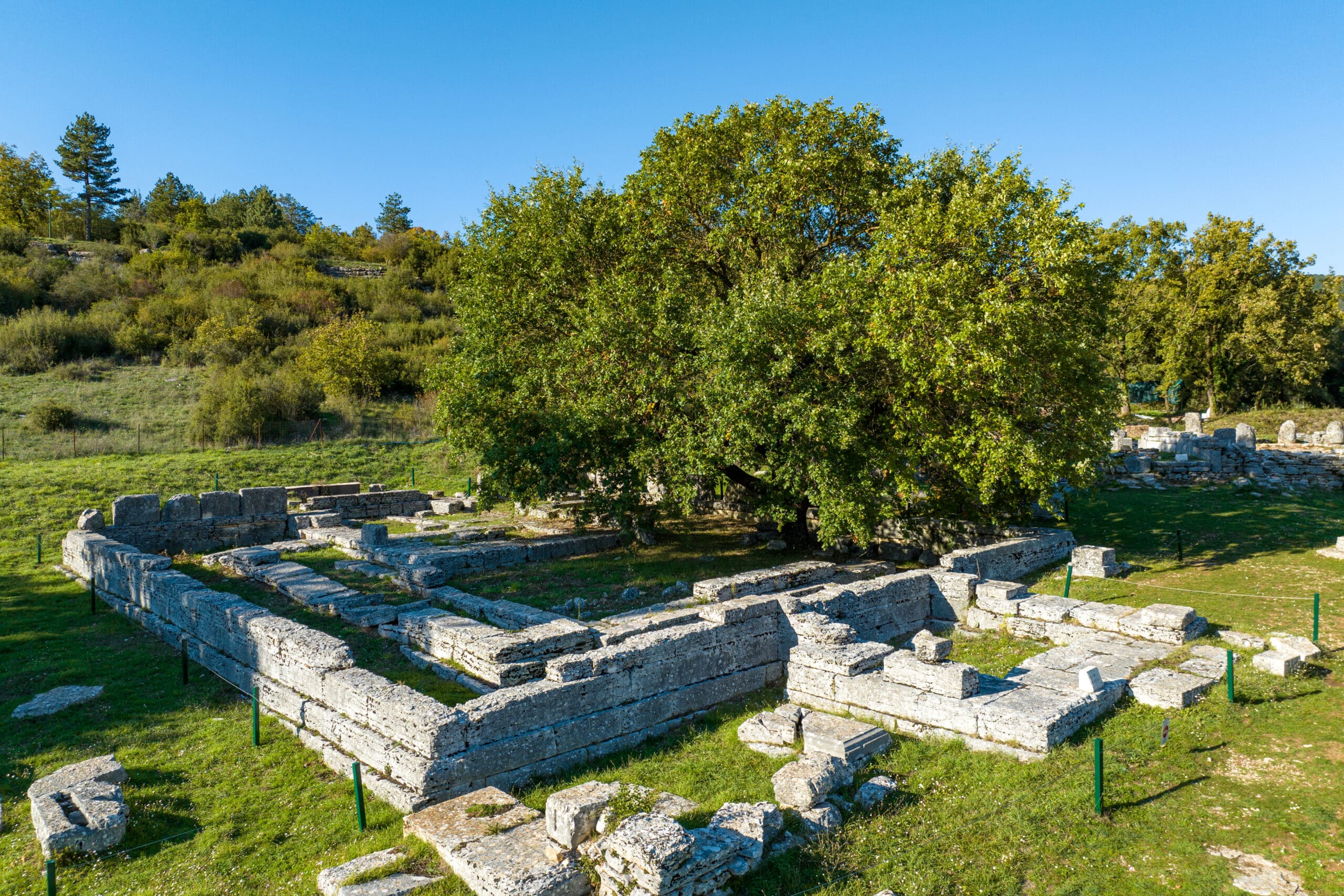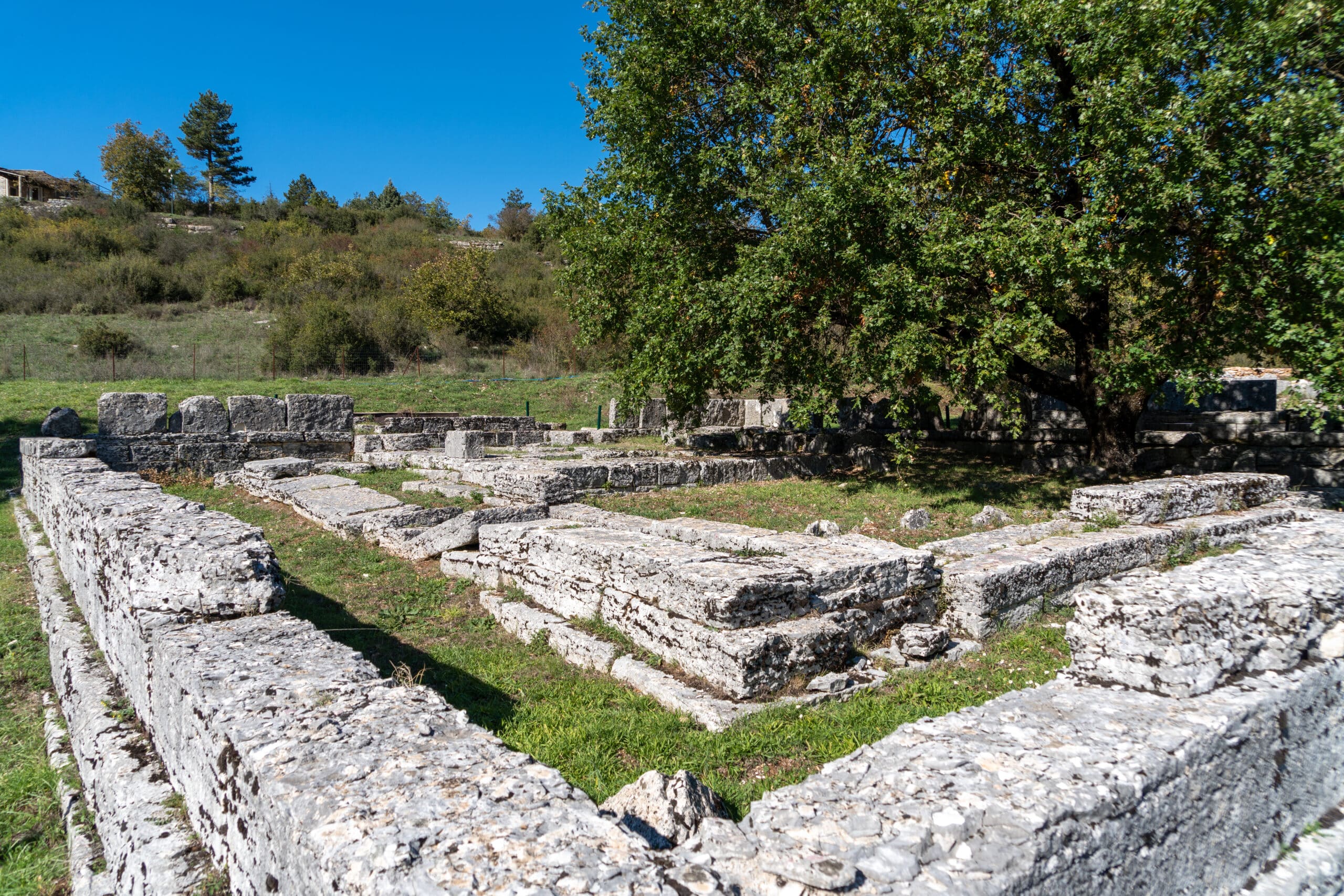
6. HIERA OIKIA
Findings uncovered over the course of archaeological excavations at the Dodona Sanctuary indicate that the area was a centre of worship since the middle of the third millennium or the early second millennium B.C. At that time, Dodona was a centre for the cult of Gaia, the earth goddess, who resided in the roots of the sacred oak tree. Her symbols were the dove, the bull and the double-bit axe. Over time, her cult was supplanted by that of Zeus and Dione. Certain researchers hypothesise that Gaia was “transformed” and became Dione, the wife of Zeus, to preserve her cult.
Up until the late 5th c. B.C. Dodona did not have a sanctuary for Zeus. The god lived in the roots of the fagus, the sacred oak, which may also have been surrounded by copper cauldrons atop tripods. The sound these cauldrons would make as they struck each-other would be interpreted, comprising a form of prophecy (dodonaion chalkeion).
The Molossians were the first tribe to erect structures at Dodona, in the early 4th c. B.C. Thus, in the first building phase a small, simple temple with only a pronaos and a sekos, was erected. The Roman historian Polybius (writing in the 2nd c. B.C.) named this structure the Hiera Oikia. In addition to enabling worship, the temple functioned as a repository for offerings dedicated to the god by the faithful. Over the course of the subsequent building phase, the Hiera Oikia was expanded with the inclusion of an opus isodomum enclosure that extended from the façade of the temple and surrounded the oak (fagus). At about the same time, the previous tripods were replaced by an offering left by the Corcyreans. This Corcyrean whip was connected with an oracular rite.
Other methods used to produce oracles at the sanctuary included cleromancy, according to Cicero (De Divinatione, 1.34.76, 2.32.69) and observation of the flight paths of doves, birds directly connected with the founding myth of Dodona.
Pilgrims initially submitted their questions verbally. Answers would likewise be given verbally, though there are rare cases of written answers. From the 6th c. B.C. onwards pilgrims would inscribe their questions onto the soft, malleable surface of rectangular -for the most part- lead tablets.
Over the centuries, the Hiera Oikia was subjected to several architectural modifications. For example, during the reign of king Pyrrhus the courtyard was embellished with the inclusion of three ionic-order stoas. Pyrrhus decorated the columns that held up the stoas with Roman and Macedonian shields, spoils of war brought back from his victories at Heraclea in Italy and at the Aoos river respectively. The stoas also stored agreements and decrees of the Epirotes. During their raid on the sanctuary, the Aetolians sacked the Hiera Oikia to destroy the agreements the Epirotes kept there.
The ruined structure was rebuilt in 218 B.C., in the wake of the Epirote and Macedonian sack of the Aetolian capital of Thermos in revenge for the Aetolian invasion of Dodona. The first, small temple was replaced by a magnificent new prostyle temple in the Ionic order, with four columns in its façade. The new structure was heavily reminiscent of an ancient Greek home.
In 393 B.C. a Decree issued by Theodosius the Great officially abolished the cult of Zeus at Dodona and replaced it with Christianity.














